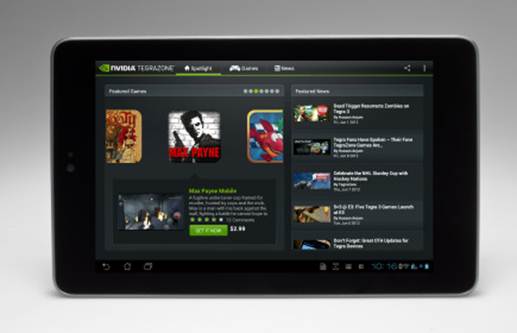With the bewildering array of tablets on the market,
it can be hard to decide which is right for you. If you’ve got your heart set
on a full-size tablet, here’s what to look for.
Tablet PCs bridge the gap between laptops and smartphones.
They combine the mobility and connectivity of a smartphone with a larger screen
and more powerful processor that’s more akin to a laptop, and they run a
lightweight, touchscreen-focused operating system.

Which full-size
tablet?
The fourth-generation iPad, along with the latest version of
iOS, is a tough combination to beat: it’s slick, supremely easy to use and has
a library of hundreds of thousands of apps to choose between. It remains the
benchmark that other tablets strive to beat, but it finally has two genuine
rivals in the face of Google’s Nexus 10 and Microsoft’s Surface RT.
The Nexus 10 has all the features you’d expect from a
high-end tablet, combined with a slick OS in Android Jelly Bean, the highest resolution
screen ever found on a tablet, and an unbeatably low price tag, starting from
$479.
Meanwhile, the Surface RT is Microsoft’s own-brand tablet
running its Windows RT OS, which is optimised for touch input. The Surface RT
costs the same as Apple’s entry-level iPad, at $599.
Processor and memory
A fast processor and an adequate helping of memory are
essential for slick performance. The gigahertz rating of a processor alone
can’t tell you how it will compare with alternative chips, and you also need to
take into account the number of cores it has (the more the better for
multitasking). Some premium tablets sport dual-core chips and 2GB of RAM,
although the supremely fast iPad combines a dual-core processor with just 1GB
of RAM.
We use Geekbench to test the overall performance of each
tablet (in which a higher score is better), SunSpider to test the web-browsing
JavaScript performance (a lower score is better), and GLBenchmark for gaming
framerates (higher is better).You can read our results within the individual
reviews.
Storage
Some tablets, and notably the iPad, don’t allow you to add
to their storage capacity via a removable memory card, so make sure you get
sufficient storage when you buy. This is especially important given the
ever-more impressive resolutions of which full-size tablets’ screens are
capable, and the range of HD functionality each platform now offers.
So how much storage do you need? As an example, the 720p
films Apple offers to buy or rent in the UK each consume around 4GB, and with
1080p movies the storage problem is only exacerbated. Then there are all the
games you download, and HD photos and videos you capture to consider, not
forgetting the OS itself, which will usually gobble up at least 2GB.
We’d recommend 32GB of storage as the minimum for most
users, but you’ll get by with less if you mostly stream content from the cloud
or a Wi-Fi-enabled portable drive, or you’re lucky enough to be able to access
external storage.
Screen
As your main interface with the tablet, the screen is of
crucial importance. The iPad has long led the pack, with its Retina-quality
in-plane switching display. The Google Nexus 7 can now claim to beat its
resolution, but that’s not the only means by which to judge a display. Also
important are the viewing angles, contrast and brightness levels, and the
vibrance of colours.

The Google Nexus 7
can now claim to beat its resolution, but that’s not the only means by which to
judge a display.
Most screens are capacitive, but you may still find some
budget models with less responsive resistive panels. These can be incredibly
frustrating in use.
Avoid glossy displays where possible, with which overhead or
bright lighting can cause distracting reflections.
Battery life
Good battery life is vital for all-day use, but tablets
don’t have removable batteries like laptops do. What you’ll get from your
tablet depends on how you use it. Using Wi-Fi and 3G will drain the battery far
quicker than merely watching videos stored on the internal memory, for example.

Security is only
really of concern to the Android platform and, even then, there are plenty of
free apps to protect you
Software
The App Store boasts the best catalogue of apps, both in
terms of numbers and security, with each app rigorously screened. Google Play,
by comparison, has a more lenient app-admission policy, plus apps can be
installed on to an Android device from any third-party site, which means users
must keep their wits about them when finding new software. Windows Store,
lastly, is still relatively new, and you’re likely to find that many of the
apps you want to use are not yet available.
Watch out for cheap Android tablets that don’t offer access
to Google Play, since you’ll be restricted in the apps and games you can
download. This is also a problem for tablets from Amazon and Barnes &
Noble, which run heavily customised versions of the OS and offer access only to
their own stores.
Security
With tablets and smartphones growing in popularity at
extraordinary pace, mobile platforms are increasingly becoming a target
for malware writers. Apple’s locked-down system has done wonders to keep out
the criminals, so this really is a concern only for tablets running Android
and, even then, threats can come into contact with your device only when you
download dubious apps. Don’t let this put you off buying an Android tablet: a
plethora of third-party apps from big-name brands in the PC world, such as
Kaspersky and Bitdefender, promise to protect your device at little or no cost.